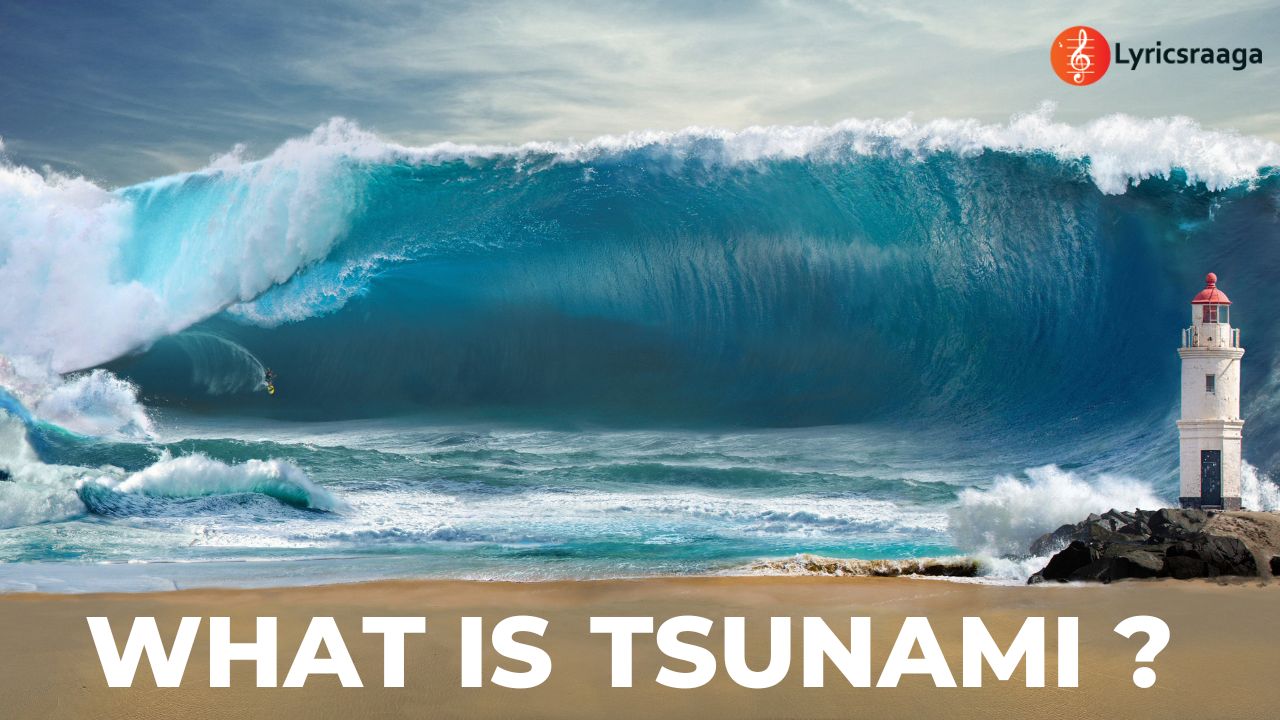What is Tsunami & How it Happens
What is Tsunami & How it Happens ?: A tsunami is a series of ocean waves with very long wavelengths [typically several hundred kilometers] caused by large-scale disturbances of the ocean, such as earthquakes, volcanic eruptions, landslides, or meteorite impacts. These disturbances displace a large volume of water, which then generates a series of waves that can travel across entire ocean basins, causing devastation along coastlines when they eventually reach land.
Tsunamis can travel at speeds of up to 500 miles per hour (800 km/h) in open ocean, and can have wave heights of tens of meters when they reach shore, causing widespread flooding and damage to coastal infrastructure. It is important for coastal communities to have warning systems and evacuation plans in place in order to minimize the impact of these powerful natural disasters.
How Tsunami happens ?
A tsunami can be caused by a variety of natural events, but the most common cause is an undersea earthquake. When an earthquake occurs under the ocean, it can create a large disturbance in the water, pushing up or down on the seafloor and creating massive waves that travel outwards from the epicenter.
The energy from the earthquake travels through the water in the form of waves, and as these waves reach shallower waters near the coast, they can grow in height and intensity. When the waves reach the shoreline, they can cause flooding, destruction of buildings and infrastructure, and loss of life.
Other events that can trigger a tsunami include volcanic eruptions, landslides, and even meteorite impacts. In all of these cases, a large-scale disturbance of the water is created, which generates powerful waves that can travel across entire ocean basins.
It is important to note that not all earthquakes or natural events result in a tsunami. For a tsunami to occur, the event must be of a certain magnitude and generate enough energy to create a significant disturbance in the water. Additionally, the location of the event and the topography of the seafloor and coastline can also play a role in the size and impact of the resulting tsunami.

Here are some additional information about tsunamis:
Tsunamis can be triggered by a variety of events, including earthquakes, volcanic eruptions, landslides, glacier calving, and even meteorite impacts. However, the most common cause of tsunamis is earthquakes, particularly those that occur under the ocean.
The size and impact of a tsunami depends on several factors, including the size and type of the triggering event, the depth and location of the event, the distance from shore, and the shape and slope of the shoreline.
Tsunamis can travel thousands of kilometers across the ocean before reaching shore. This means that even areas far from the initial event can still be at risk of experiencing significant waves and flooding.
Tsunamis can cause significant damage to coastal communities, including flooding, erosion, and destruction of infrastructure such as buildings, roads, and bridges. In some cases, tsunamis can also lead to loss of life.
Warning systems have been developed to help detect and alert communities to the potential threat of a tsunami. These systems rely on real-time data from seismometers and other monitoring equipment to detect earthquake activity that could potentially trigger a tsunami.
When a tsunami warning is issued, it is important for coastal residents to follow evacuation orders and move to higher ground. Tsunamis can arrive within minutes or hours of the initial event, so it is important to act quickly to minimize the risk of harm.
Here are the top 10 most disastrous tsunamis in history, based on the number of fatalities:
1. Indian Ocean tsunami (2004): The deadliest tsunami in history, with an estimated 230,000 people killed across 14 countries bordering the Indian Ocean.
2. Nankaido tsunami (1498): A tsunami triggered by a 8.6 magnitude earthquake off the coast of Japan that killed an estimated 31,000 people.
3. Lisbon tsunami (1755): A tsunami triggered by a 8.5-9.0 magnitude earthquake off the coast of Portugal that killed an estimated 30,000 people.
4. Great East Japan tsunami (2011): A tsunami triggered by a 9.0 magnitude earthquake off the coast of Japan that killed approximately 18,000 people.
5. Krakatoa tsunami (1883): A tsunami triggered by a massive volcanic eruption in the Indonesian archipelago that killed an estimated 36,000 people.
6. Aceh tsunami (2004): A tsunami triggered by the same earthquake as the Indian Ocean tsunami that killed an estimated 170,000 people in the Aceh region of Indonesia.
7. Sanriku tsunami (1896): A tsunami triggered by a 8.5 magnitude earthquake off the coast of Japan that killed an estimated 22,000 people.
8. Chilean tsunami (1960): A tsunami triggered by a 9.5 magnitude earthquake off the coast of Chile that killed an estimated 6,000 people.
9. Papua New Guinea tsunami (1998): A tsunami triggered by a 7.0 magnitude earthquake off the coast of Papua New Guinea that killed an estimated 2,200 people.
10. Messina tsunami (1908): A tsunami triggered by a 7.1 magnitude earthquake in the Strait of Messina, Italy, that killed an estimated 72,000 people.



